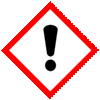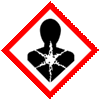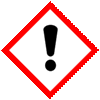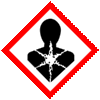 |
King of Chemicals Manufacturers |
Specifications, Properties, Uses, SDS of Micro-encapsulated Ammonium Persulfate & Potassium Persulfate Gel Breaker Manufacturer Supplier Exporter Wholesale & Small Packs. |
|
| King of Chemicals has several associated companies having accreditations like cGMP, GLP - FDA Approved Good Manufacturing Practice and Good Laboratory Practice of WHO standard, ISO-9001, ISO-14001, ISO/IEC 17025, ISO ISO-45000, HACCP, FSSC 220000, FSSAI, "REACH" Registered, Kosher & Halal Certified. e-CTD and DMF support can be made available if needed. We offer USP NF BP Ph Eur EP IP JP Analytical Reagent FCC Food Grade Chemicals & Nutraceuticals. | |
        |
|
Muby Chem Pvt. Ltd. is a several decades old group of companies, engaged in manufacturing, supplying, distributing, wholesale supplies of Micro-encapsulated Ammonium Persulfate & Potassium Persulfate Gel Breaker for actual users, including retail or small pack supplies for research and development work.
We and/or our associated units have all the facilities to supply as per cGMP standard observing good manufacturing practice and good laboratory practice. We can assure low microbial count and also offer a test certificate for the same. We maintain warehouses across USA, India, and UAE. Our group exports to USA, Canada, Mexico, Argentina, Brazil, Chile, Korea, Malaysia, Thailand, Indonesia, Europe, and several other parts of the world. We supply in wholesale container loads to small pack of few grams. Solid products may be specified for it size and shape as desired by the buyer.








Micro-encapsulated Ammonium Persulfate & Potassium Persulfate Gel Breaker
For Properties Specifications Uses of Micro-encapsulated Ammonium Persulfate & Potassium Persulfate Gel Breaker Click Properties, Specifications, Uses, Price, Process of Micro-encapsulated Ammonium Persulfate & Potassium Persulfate Gel Breaker Manufacturer.
For For SDS MSDS Sheet of Micro-encapsulated Ammonium Persulfate & Potassium Persulfate Gel Breaker Click SDS Safety Data Sheet MSDS Sheet of Micro-encapsulated Ammonium Persulfate Gel Breaker Manufacturer.
For For SDS MSDS Sheet of Micro-encapsulated Potassium Persulfate Gel Breaker Click SDS Safety Data Sheet MSDS Sheet of Micro-encapsulated Potassium Persulfate Gel Breaker Manufacturer.
The Properties, Specifications, Monograph and Uses of Micro-encapsulated Ammonium Persulfate & Potassium Persulfate Gel Breaker:
Micro-encapsulated Ammonium Persulfate & Potassium Persulfate Gel Breaker is manufactured by wurster coating process. We have different sizes of encapsulating machines to take a batch of 1kg to 500kg. Micro-encapsulation of Ammonium Persulfate & Potassium Persulfate Gel Breaker is done by spray painting of a suitable grade of Ammonium Persulfate & Potassium Persulfate Gel Breaker with a polymer. The inside core is of say about 65 to 90% Ammonium Persulfate or Potassium Persulfate Gel Breaker and the coating is the balance.
Specifications of Micro-encapsulated Ammonium Persulfate Gel Breaker:
Coated or Encapsulate Ammonium Persulfate, based coated chemical to be active at 140F or 60C delayed release gel breaker is used for breaking gel up to temperatures of 200F or a little more.
Specifications of Micro-encapsulated Ammonium Persulfate:
Assay of Ammonium Persulfate: 65 to 90%.
Assay of coating medium: Balance.
Mesh size: 15-40 mesh.
The best grade of Ammonium Persulfate is used for encapsulation.
Specifications of Micro-encapsulated Potassium Persulfate Gel Breaker:
Coated or Encapsulate Potassium Persulfate based coated chemical to be active at 195F or 90C called high temperature delayed release gel breaker is used when significantly higher down-hole temperatures up to 300F or 150C are expected.
Specifications of Micro-encapsulated Potassium Persulfate:
Assay of Potassium Persulfate: 65 to 90%.
Assay of coating medium: Balance.
Mesh size: 15-40 mesh.
The best grade of Potassium Persulfate is used for encapsulation.
The MSDS-SDS Hazard Statement of Micro-encapsulated Ammonium Persulfate Gel Breaker:
Micro Encapsulated Gel Breaker Ammonium Persulfate SDS, Safety Data Sheet
MSDS, Material Safety Data Sheet 26-Aug-21
1. Product Identification
Product Name/Synonyms: Encapsulated Ammonium Persulfate, Coated Gel Breaker, Encapsulated Breaker LT, Encapsulated Breaker HT, Encapsulated Breaker MT.
CAS No.: Mixture.
Intended Use and uses advised against (if any): Oil & Gas Wells fracturing and Industrial Manufacturing.
Supplier: As per letterhead.
2. Hazards Identification
GHS, Globally Harmonized System Classification in accordance with 29 CFR 1910
Classification according to Regulation (EC) No 1272/2008
Oxidizing Solids Category 3, H272
Acute toxicity - Oral Category 4, H302
Skin corrosion/irritation Category 2, H315
Skin sensitization Category 1, H317
Serious eye damage/eye irritation Category 2A, H319
Respiratory sensitization Category 1, H334
Specific target organ toxicity (single exposure), Respiratory tract Category 3, H335
Labeling according to GHS USA & Regulation (EC) No 1272/2008
GHS Label Elements 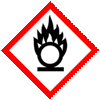 Oxidizing Solid |
GHS Label Elements |
GHS Label Elements |
Signal Words: Warning
Hazard Statements:
H272: May intensify fire; oxidizer
H302: Harmful if swallowed
H315 : Causes skin irritation
H317: May cause an allergic skin reaction
H319: Causes serious eye irritation
H334: May cause allergy or asthma symptoms or breathing difficulties if inhaled
H335: May cause respiratory irritation
Precautionary Statements - Prevention:
P210: Keep away from heat/sparks/open flames/hot surfaces. - No smoking.
P220: Keep/Store away from clothing/other combustible materials
P221: Take any precaution to avoid mixing with combustibles.
P260: Do not breathe dust/fume/gas/mist/vapors/spray
P264: Wash ... thoroughly after handling
P270: Do not eat, drink or smoke when using this product
P271: Use only outdoors or in a well-ventilated area.
P280-Wear protective gloves/protective clothing/eye protection/face protection.
P285: In case of inadequate ventilation wear respiratory protection.
Precautionary Statements - Response:
P301 + P312: IF SWALLOWED: Call a POISON CENTER or doctor if you feel unwell.
P302 + P352: IF ON SKIN: Wash with plenty of water.
P304 + P341: IF INHALED: If breathing is difficult, remove to fresh air and keep at rest in a position comfortable for breathing.
P305+P351+P338: IF IN EYES: Rinse cautiously with water for several minutes. Remove contact lenses, if present and easy to do. Continue rinsing.
P314: Get Medical advice/attention if you feel unwell.
P330: If swallowed, rinse mouth.
P332+P313: If skin irritation occurs: Get medical advice/attention
P337+P313: If eye irritation persists: Get medical advice/ attention.
P360: Rinse immediately contaminated clothing and skin with plenty of water before removing clothes.
P362: Take off contaminated clothing and wash before reuse.
Precautionary Statements - Storage
P402: Store in a dry place
P403 + P233 - Store in a well-ventilated place. Keep container tightly closed
P501: Dispose of contents/container to authorized agents only.
3. Composition/Information on Ingredients
1. Ammonium Persulfate
CAS Number: 7727-54-0
EC Number: 231-786-5
Less than 90%
2. Other Non-Haz Ingredients
Less than 35%
Confidential Business Information.
4. First Aid Measures
Always seek medical attention after first aid measures are provided.
Inhalation: Remove to fresh air. If not breathing, give artificial respiration. If breathing is difficult, give oxygen. Get medical attention.
Ingestion: If swallowed, do not induce vomiting. Give large quantities of water. Never give anything by mouth to an unconscious person. Get medical attention immediately.
Skin Contact: In case of contact, immediately flush skin with plenty of water for at least 15 minutes while removing contaminated clothing and shoes. Cover the irritated skin with an emollient. Cold water may be used. Wash clothing & shoes before reuse. Get medical attention.
Eye Contact: Check for and remove any contact lenses. In case of contact, immediately flush eyes with plenty of water for at least 15 minutes. Cold water may be used. Get medical attention.
Advice to Physicians: Please treat symptomatically and supportively.
5. Fire Fighting Measures
Fire: Ammonium Persulfate and Encapsulated Gel Breaker is not combustible, but substance is a strong oxidizer and its heat of reaction with reducing agents or combustibles may cause ignition. Heating or contact with water releases oxygen which may intensify combustion in an existing fire.
Explosion: An explosion hazard when mixed with finely powdered organic matter, metal powder, or reducing agents.
Fire Extinguishing Media: Use any means suitable for extinguishing surrounding fire. Do not use water.
Extinguishing Media Not recommended: Avoid using solid water jet as it may scatter the fire.
Special Information: In the event of a fire, wear full protective clothing and NIOSH-approved self-contained breathing apparatus with full face piece operated in the pressure demand or other positive pressure mode. At high temperatures under fire conditions, it may produce toxic or irritating fumes. Fire-extinguishing work is done from the windward and the suitable fire-extinguishing method according to the surrounding situation is used. Uninvolved persons should evacuate to a safe place.
6. Accidental Release Measures
Personal precautions, protective equipment, environmental precautions and emergency procedures: Avoid breathing dust/fumes/gas/mist/vapors/spray. Use individual protective equipment (waterproof boots, suitable protective clothing, safety glasses, etc.). Restrict unprotected personnel from the area. Prevent any contact with hot surfaces. Do not approach facing the wind. Do not touch the spilled material. Keep away from drains, surface and groundwater and soil.
Methods and materials used for containment Cleanup procedures and Storage: Contain spilled material. Cover with an inert, non-combustible, inorganic absorbent material, sweep up, and remove to an approved disposal container.
It is an oxidizing material. Stop leak if without risk. Avoid contact with a combustible material (wood, paper, oil, clothing...). Keep the substance damp using water spray. Do not touch spilled material. Prevent entry into sewers. Eliminate all ignition sources. Avoid penetration into waterways, sewers, soil, or groundwater.
7. Handling and Storage
Precautions for safe handling: Apply according to good manufacturing and industrial hygiene practices with proper ventilation. Wash thoroughly after handling. Do not drink, eat or smoke while handling. Avoid breathing dust/fumes/gas/mist/vapors/spray. Avoid contact with eyes, skin, and clothing. Keep container tightly closed. Avoid ingestion and inhalation. Use individual protective equipment (waterproof boots, suitable protective clothing, safety glasses, etc.). Prevent any contact with hot surfaces. Containers of this material may be hazardous when empty since they retain product residues.
Conditions for safe storage, including any incompatibilities: Store in cool, dry and ventilated area away from heat sources and protected from sunlight in tightly closed original container. Keep air contact to a minimum. Store protected from heat, sparks and ignition sources and incompatible materials. Do not store with incompatible materials like combustibles, organic or other readily oxidizable materials. Avoid storage on wood floors. Containers of this material may be hazardous when empty since they retain product residues (dust, solids); observe all warnings and precautions listed for the product. Handle product only in closed system or provide appropriate exhaust ventilation at machinery. Avoid contact with skin and eyes. Remove and wash contaminated clothing before re-use.
8. Exposure Controls/Personal Protection
Airborne Exposure Limits: - ACGIH Threshold Limit Value (TLV): 0.1 mg/m3 (TWA) as persulfate
Ventilation System: A system of local and/or general exhaust is recommended to keep employee exposures below the Airborne Exposure Limits. Local exhaust ventilation is generally preferred because it can control the emissions of the contaminant at its source, preventing dispersion of it into the general work area.
Personal Respirators (NIOSH Approved): For conditions of use where exposure to dust or mist is apparent and engineering controls are not feasible, a particulate respirator (NIOSH type N95 or better filters) may be worn. If oil particles (e.g. lubricants, cutting fluids, glycerin, etc.) are present, use a NIOSH type R or P filter. For emergencies or instances where the exposure levels are not known, use a full-face positive-pressure, air-supplied respirator. WARNING: Air-purifying respirators do not protect workers in oxygen-deficient atmospheres.
Skin Protection: Wear protective gloves and clean body-covering clothing.
Eye Protection: Use chemical safety goggles. Maintain eye wash fountain and quick-drench facilities in work area.
Other Control Measures: Maintain good housekeeping in work area. Dust deposits on floors and other surfaces may pick up moisture and cause the surfaces to become slippery and present safety hazards. Handle in accordance with good industrial hygiene and safety practice. Wash hands after handling.
9. Physical and Chemical Properties
Appearance: Encapsulate Gel Breaker is white to off-white crystals
Odor: Mild organic odor
Odor threshold: Not available.
pH: Not available.
Relative density: 1.75
Melting Point: Decomposes
Initial boiling point and boiling range: Not available.
Flash point: Not available.
Auto-ignition temperature: Not available.
Decomposition temperature: Not available.
Upper/lower flammability or explosive limits: Not available.
Vapor pressure: Not available.
Vapor density: Not available.
Evaporation rate: Not available.
Flammability (solid, gas): Not available.
Partition coefficient: n-octanol/water: Not available.
Solubility: Soluble in water.
Viscosity: Not available.
10. Stability and Reactivity
Stability: It is stable under ordinary conditions of use and storage. Stability decreases in the presence of moisture
Hazardous Decomposition Products: Decomposed by moisture to form oxygen and ozone. Burning may produce nitrogen oxides, sulfur oxides, sulfuric acid, chlorine or hydrochloric acid and fumes.
Hazardous Polymerization: Will not occur
Incompatibilities: Reducing agents, organic material, sodium peroxide, water and powdered metals especially aluminum
Conditions to Avoid: Moisture, combustible materials and incompatibles.
11. Toxicological Information
Ammonium Persulfate
Oral rat LD50: 689 mg/kg
Carcinogenic Effects: Not known to be a carcinogen.
Mutagenic Effects: Not available.
Teratogenic Effects: Not available.
Developmental Toxicity: Not available.
Reproductive Effects: No information available.
12. Ecological Information
Environmental Toxicity: No information found.
Persistence and Degradability: No information available.
Mobility: No information available.
Bioaccumulation/ Accumulation: No information available.
Results of PBT and vPvB assessment: No data available for assessment.
13. Disposal Considerations
Whatever cannot be saved for recovery or recycling should be handled as hazardous waste and sent to a RCRA approved waste facility. Processing use or contamination of this product may change the waste management options. State and local disposal regulations may differ from federal disposal regulations. Dispose of container and unused contents in accordance with federal, state and local requirements.
14. Transport Information
Land Transport DOT USA, TDG Canada & ADR/RID Europe
UN/NA: UN1444
Proper Shipping Name: Contains Ammonium Persulfate
Hazard Class: 5.1; Packing Group: III.
Sea Transport IMO/IMDG
UN/NA: UN1444
Proper Shipping Name: Contains Ammonium Persulfate
Hazard Class: 5.1; Packing Group: III.
Air Transport IATA/ICAO
UN/NA: UN1444
Proper Shipping Name: Contains Ammonium Persulfate
Hazard Class: 5.1; Packing Group: III.
15. Regulatory Information
USA:
SARA 311/312 Hazards: See section 2.
California No Significant Risk Level: None of the chemicals in this product are listed.
Section 16 - Additional Information
DISCLAIMER: The information and recommendations set forth herein are presented in good faith and believed correct as of the date hereof. It is compiled from various sources, and it is not necessarily all inclusive nor fully adequate in every circumstance. In addition, these suggestions should not be confused with nor followed in violation of applicable laws, regulations, rules, or insurance requirements applicable. This SDS MSDS sheet is intended only as a guide to the appropriate precautionary handling of the material by a professionally trained person using this product. Individuals receiving the information must exercise their independent judgment in determining its appropriateness for a particular purpose. This shall not constitute a guarantee for any specific product features and shall not establish a legally valid contractual relationship. In no case shall our company be liable to loss or damages by the product user.The MSDS-SDS Hazard Statement of Micro-encapsulated Potassium Persulfate Gel Breaker:
Encapsulated Potassium Persulfate SDS Safety Data Sheet
MSDS, Material Safety Data Sheet 26-Aug-2021
1. Product & Company Identification
Product Name & Other Names: Encapsulated Potassium persulfate, Encapsulated Potassium persulphate, Encapsulated gel breaker.
CAS No.: Mixture
Relevant uses and uses advised against (if any): Oxidizer for Oil & Gas Wells and Industrial Use.
Supplier: As per letterhead.
2. Hazards Identification
GHS, Globally Harmonized System Classification in accordance with 29 CFR 1910
Classification according to Regulation (EC) No 1272/2008
Acute toxicity - Oral Category 4
Skin corrosion/irritation Category 2
Serious eye damage/eye irritation Category 2A
Respiratory sensitization Category 1
Skin sensitization Category 1
Specific target organ toxicity (single exposure) Category 3
Oxidizing Solids Category 3
Acute aquatic toxicity Category 3
Labeling according GHS & Regulation (EC) No 1272/2008
GHS Label Elements 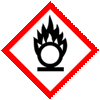 Oxidizing Solid |
GHS Label Elements |
GHS Label Elements |
Signal Word: Danger
Hazard Statements:
H272 - May intensify fire; oxidizer
H302 - Harmful if swallowed
H315 - Causes skin irritation
H317 - May cause an allergic skin reaction
H319 - Causes serious eye irritation
H334 - May cause allergy or asthma symptoms or breathing difficulties if inhaled
H335 - May cause respiratory irritation
H402 - Harmful to aquatic life.
Precautionary Statements - Prevention
P210: Keep away from heat/sparks/open flames/hot surfaces. - No smoking.
P220: Keep/Store away from clothing/combustible materials
P221: Take any precaution to avoid mixing with combustibles
P261: Avoid breathing dust.
P264: Wash face, hands and any exposed skin thoroughly after handling
P270: Do not eat, drink or smoke when using this product
P271: Use only outdoors or in a well-ventilated area
P272: Contaminated work clothing should not be allowed out of the workplace.
P280: Wear protective gloves/ protective clothing/ eye protection/ face protection
P285: In case of inadequate ventilation wear respiratory protection
Precautionary Statements - Response
P301 + P312: IF SWALLOWED: Call a POISON CENTER or doctor if you feel unwell.
P302 + P352: IF ON SKIN: Wash with plenty of water.
P304 + P341: IF INHALED: If breathing is difficult, remove to fresh air and keep at rest in a position comfortable for breathing.
P305 + P351 + P338: IF IN EYES: Rinse cautiously with water for several minutes. Remove contact lenses, if present and easy to do. Continue rinsing.
P314: Get Medical advice/attention if you feel unwell.
P330: If swallowed, rinse mouth.
P333 + P313: If skin irritation or rash occurs: Get medical advice/ attention.
P337 + P313: If eye irritation persists: Get medical advice/ attention
P342 + P311: If experiencing respiratory symptoms: Call a POISON CENTER or doctor.
P362: Take off contaminated clothing and wash before reuse.
P370 + P378: In case of fire: Use water for extinction
Precautionary Statements - Storage
P402: Store in a dry place.
P403 + P233 - Store in a well-ventilated place. Keep container tightly closed
P501: Dispose of contents/container in accordance with local, regional, national, international regulations.
3. Composition/Information on Ingredients
Ingredient1: Potassium persulfate, Potassium peroxodisulfate
CAS No.: 7727-21-1
Percentage: Less than 85%
Ingredient2: Non-Hazardous Ingredients
Percentage: Less than 35%
4. First Aid Measures
Always seek medical attention after first aid measures are provided.
Inhalation: Remove to fresh air. If not breathing, give artificial respiration. If breathing is difficult, give oxygen. Get medical attention.
Ingestion: If swallowed, do not induce vomiting. Give large quantities of water. Never give anything by mouth to an unconscious person. Get medical attention immediately.
Skin Contact: In case of contact, immediately flush skin with plenty of water for at least 15 minutes while removing contaminated clothing and shoes. Cover the irritated skin with an emollient. Cold water may be used. Wash clothing & shoes before reuse. Get medical attention.
Eye Contact: Check for and remove any contact lenses. In case of contact, immediately flush eyes with plenty of water for at least 15 minutes. Cold water may be used. Get medical attention.
5. Fire Fighting Measures
Fire: Not combustible, but substance is a strong oxidizer and its heat of reaction with reducing agents or combustibles may cause ignition. Heating or contact with water releases oxygen which may intensify combustion in an existing fire.
Explosion: An explosion hazard when mixed with finely powdered organic matter, metal powder, or reducing agents.
Special hazards arising from the substance or mixture: Sulphur oxides, Potassium oxides
Fire Extinguishing Media: Use water spray, alcohol-resistant foam, dry chemical or carbon dioxide. Use means suitable for extinguishing surrounding fire. Cool containers with flooding quantities of water until well after fire is out.
Extinguishing Media Not recommended: Avoid using solid water jet as it may scatter the fire.
Special Information: In the event of a fire, wear full protective clothing and NIOSH-approved self-contained breathing apparatus with full face piece operated in the pressure demand or other positive pressure mode. At high temperatures under fire conditions, it may produce toxic or irritating fumes. Fire-extinguishing work is done from the windward and the suitable fire-extinguishing method according to the surrounding situation is used. Uninvolved persons should evacuate to a safe place.
6. Accidental Release Measures
Personal precautions, protective equipment and emergency procedures: Avoid breathing dust/fumes/gas/mist/vapors/spray. Use individual protective equipment (waterproof boots, suitable protective clothing, safety glasses, etc.). Restrict unprotected personnel from the area. Prevent any contact with hot surfaces. Do not approach facing the wind. Do not touch the spilled material.
Environmental precautions: Do not let the product enter drains, soil, or water sources.
Methods and materials used for containment cleanup procedures and Storage: It is an oxidizing material. Stop leak if without risk. Avoid contact with a combustible material (wood, paper, oil, clothing etc.). Keep the substance damp using water spray. Do not touch spilled material. Prevent entry into sewers. Eliminate all ignition sources. Avoid penetration into waterways, sewers, soil or groundwater. Local authorities should be advised if significant spillages cannot be contained.
7. Handling and Storage
Precautions for safe handling: Apply according to good manufacturing and industrial hygiene practices. Ensure proper ventilation. Wash thoroughly after handling. Do not drink, eat or smoke while handling. Avoid contact with skin, eyes and clothing. Minimize dust generation. Avoid breathing dust/fumes/gas/mist/vapors/spray. Avoid contact with eyes, skin, and clothing. Keep container tightly closed. Avoid ingestion and inhalation. Use individual protective equipment (waterproof boots, suitable protective clothing, safety glasses, etc.). Prevent any contact with hot surfaces.
Conditions for safe storage, including any incompatibilities: Store in cool, dry and ventilated area away from heat sources and protected from sunlight in tightly closed original container. Keep air contact to a minimum. Do not leave the material container open. Store protected from heat, sparks and ignition sources and incompatible materials. Avoid contact with skin and eyes. Avoid inhalation of dust/mist/vapor. Do not store with incompatible materials like reducing agents, organic material, water and powdered metals especially aluminum, acids, bases, halides, oxidizing agents, reducing agents, combustible materials. Avoid storage on wood floors. Containers of this material may be hazardous when empty since they retain product residues.
8. Exposure Controls/Personal Protection
Airborne Exposure Limits: - ACGIH Threshold Limit Value (TLV): 0.1 mg/m3 (TWA) for persulfate part.
Ventilation System: A system of local and/or general exhaust is recommended to keep employee exposures below the Airborne Exposure Limits. Local exhaust ventilation is generally preferred because it can control the emissions of the contaminant at its source, preventing dispersion of it into the general work area.
Personal Respirators (NIOSH Approved): For conditions of use where exposure to dust or mist is apparent and engineering controls are not feasible, a particulate respirator (NIOSH type N95 or better filters) may be worn. If oil particles (e.g. lubricants, cutting fluids, glycerin, etc.) are present, use a NIOSH type R or P filter. For emergencies or instances where the exposure levels are not known, use a full-face positive-pressure, air-supplied respirator. WARNING: Air-purifying respirators do not protect workers in oxygen-deficient atmospheres.
Skin Protection: Wear protective gloves and clean body-covering clothing.
Eye Protection: Use chemical safety goggles. Maintain eye wash fountain and quick-drench facilities in work area.
Other Control Measures: Maintain good housekeeping in work area. Dust deposits on floors and other surfaces may pick up moisture and cause the surfaces to become slippery and present safety hazards. Handle in accordance with good industrial hygiene and safety practice. Wash hands after handling.
9. Physical and Chemical Properties
Appearance: White to yellowish crystals
Odor: Mild odor to odorless
Odor threshold: Not available.
pH: Not available.
Relative density: Not available.
Melting Point: Decomposes
Initial boiling point and boiling range: Not available.
Flash point: Not available.
Auto-ignition temperature: Not available.
Decomposition temperature: Not available.
Upper/lower flammability or explosive limits: Not available.
Vapor pressure: Not available.
Vapor density: Not available.
Evaporation rate: Not available.
Flammability (solid, gas): Not available.
Partition coefficient: n-octanol/water: Not available.
Solubility(ies): Not available.
Viscosity: Not available.
10. Stability and Reactivity
Stability: Stable under ordinary conditions of use and storage.
Hazardous Decomposition Products: Decomposed by moisture. Burning may produce Potassium oxide, sulfur oxides, sulfuric acid and chlorine. Oxygen is released which supports combustion.
Hazardous Polymerization: Will not occur
Incompatibilities: Reducing agents, organic material, water and powdered metals especially aluminum. Acids, Bases, Halides, Oxidizing agents, Strong reducing agents, Combustible materials.
Conditions to Avoid: Moisture, combustible materials and incompatibles.
11. Toxicological Information
For Potassium Persulfate:
Oral rat LD50: 825 mg/kg
LD50 Dermal - Rabbit - > 10,000 mg/kg
Carcinogenicity: Not listed by ACGIH, IARC, NTP, or CA Prop 65.
Mutagenic Effects: Not available.
Developmental Toxicity: Not available.
Reproductive Effects: No information available.
12. Ecological Information
For Potassium Persulfate:
Toxicity to fish LC50: LC50 - Fish - 76.3 mg/l - 96 h
Toxicity to daphnia and other aquatic invertebrates: EC50 - Daphnia magna (Water flea) - 120 mg/l – 48.
Persistence and degradability: no data available
Bioaccumulative potential: no data available
Mobility in soil: no data available.
13. Disposal Considerations
Whatever cannot be saved for recovery or recycling should be handled as hazardous waste and sent to a RCRA approved waste facility. Processing use or contamination of this product may change the waste management options. State and local disposal regulations may differ from federal disposal regulations. Dispose of container and unused contents in accordance with federal, state and local requirements.
14. Transport Information
Land Transport DOT USA, TDG Canada & ADR/RID Europe
Proper Shipping Name: CONTAINS POTASSIUM PERSULFATE
Hazard Class: 5.1
UN/NA: UN1492
Packing Group: III
International Water IMO/IMDG
Proper Shipping Name: CONTAINS POTASSIUM PERSULFATE
Hazard Class: 5.1
UN/NA: UN1492
Packing Group: III
Air Transport ICAO/IATA
Proper Shipping Name: CONTAINS POTASSIUM PERSULFATE
Hazard Class: 5.1
UN/NA: UN1492
Packing Group: III.
15. Regulatory Information
USA:
SARA 311/312: Acute health hazard Yes; Fire hazard Yes; See section 2.
California No Significant Risk Level: None of the chemicals in this product are listed.
Section 16 - Additional Information
DISCLAIMER: The information and recommendations set forth herein are presented in good faith and believed correct as of the date hereof. It is compiled from various sources, and it is not necessarily all inclusive nor fully adequate in every circumstance. In addition, these suggestions should not be confused with nor followed in violation of applicable laws, regulations, rules, or insurance requirements applicable. This SDS MSDS sheet is intended only as a guide to the appropriate precautionary handling of the material by a professionally trained person using this product. Individuals receiving the information must exercise their independent judgment in determining its appropriateness for a particular purpose. This shall not constitute a guarantee for any specific product features and shall not establish a legally valid contractual relationship. In no case shall our company be liable to loss or damages by the product user.
Microencapsulated Ammonium Persulfate & Potassium Persulfate Gel Breaker Manufacturers, Suppliers, Exporters, Wholesalers:
King of Chemicals manufacturers

Plot No. 2900/46&47 + 2900/163to167, GIDC, Ankleshwar, Dist. Bharuch, India
India, USA, UAE
TEL: (Office) 91-22-23774610, 91-22-23723564
e-mail: info@kingofchemicals.com
Copyright and Usual Disclaimer is Applicable --- October 28, 2024
If I give you “My Word” Nobody can undo it.
If I sign an “Agreement” my Lawyer will undo it
Our products are for industrial and laboratory use only. The user must test the material before use. We are not dispensing chemists or druggist and do not offer over the counter type (OTC) products for medical use by individuals.
We and our associates manufacture pure chemicals surpassing Monograph Specifications of Analytical Reagent Standards, British & European Pharmacopoeia BP Ph Eur EP Standard, US Pharmacopoeia USP NF Standard, Indian Pharmacopoeia IP Standard, Japan Pharmacopoeia JP Standard, FCC Food Grade Standard. |
|
Micro-encapsulated Magnesium Oxide Micro-encapsulated Magnesium Sulfate |
Micro-encapsulated Potassium Citrate Micro-encapsulated Ammonium Persulfate & Potassium Persulfate Gel Breaker |
